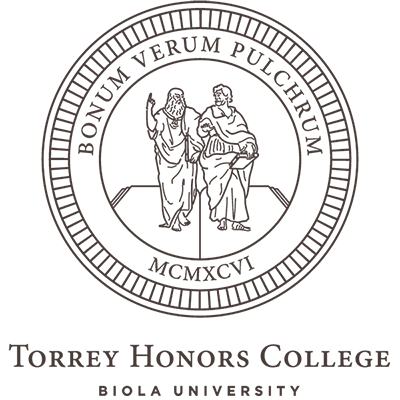A scene from the Leben der heiligen Altväter (1482)
What is Wesley’s A Christian Library?
I am asking “what is Wesley’s A Christian Library” rather than “what was” it, out of conviction that this collection of books continues to represent a spiritual force relevant for contemporary Christian life.
I. Introductory History of A Christian Library
Wesley Letters mention the plan.
Wesley wrote to Doddridge; Doddridge replied. In Wesley, Letters (but not printed, alas!) Eventually, Wesley published Doddridge’s June 1746 list in the first issue of The Arminian Magazine (1778). Read it here.
For history or for Wesley interp, best to cite the 50; for accessibility, the 30.
II. Considering the Aims of A Christian Library
A Christian Library is a kind of Great Books project, but what kind? Wesley’s object was not to produce a universal list of absolutely the best Christian books ever, but a list that captured a particular golden age: English spiritual writing in the 1600s (with loose borders: what is sometimes called “the long seventeenth century,” about 1580-1715). The empire of English Letters reached a kind of self-conscious high point shortly after this period. Writers could look back from the middle of the 1700s and confidently proclaim that the English language was no longer an dubious upstart among the languages of the world, but had proven itself to be a mighty linguistic force bristling with enviable expressive powers. It had produced true epics of the national spirit (most memorably by Spenser and Milton, though dozens of lesser epics, most now unread and some unreadable, also sprang up). A good witness to this English cultural ascendancy is Wesley’s contemporary Samuel Johnson (1709-1784), who made the broader claim but also applied it to theology:
The riches of the English language are much greater than they are commonly supposed. […] There is, I think, not one of the liberal arts which may not be competently learned in the English language. […] But our own language has, from the Reformation to the present time, been chiefly dignified and adorned by the works of our divines, who, considered as commentators, controvertists, or preachers, have undoubtedly left all other nations far behind them. No vulgar [vernacular] language can boast such treasures of theological knowledge, or such multitudes of authors at once learned, elegant and pious. Other countries and other communions have authors, perhaps, equal in abilities and diligence to ours; but if we unite number with excellence, there is certainly no nation which must not allow us to be superior. (The Idler #91, Jan 12, 1760)
Similar Anglophone pride is evident in the opening remarks of the draft book list that Doddridge sent Wesley in 1746 (see above), and in the preface to Isaac Ambrose’s book Media (ACL 8).
Think of “Practical Divinity” as a brand, a genre, or a medium.
List of places within the Library where Wesley explains what he is doing.
“Undoubtedly John Wesley’s mature theology as a whole was an interweaving of countless disparate elements. He may have been a man of one Book, but into his practical divinity were woven a hundred strands from a thousand books of all preceding centuries and many nations and denominations. He drew heavily on the Fathers of the faith, on the mystics of the Roman Church, on the Reformers, on the Puritans, on the Anglican theologians of the previous century—on any writers’ works in whom he could find congenial or challenging thought.” Baker “Pract Div” p. 13
“John Wesley’s largest work was no fewer than fifty volumes, entitled A Christian Library…of…Practical Divinity.” Baker, 7.
“the Puritans are the largest company, even though Puritanism was a largely Calvinist tradition.” Rupp, E. Gordon, “The Future of the Methodist Tradition,” The London Quarterly and Holborn Review 184 (1959): 264-274, at 267
Composing with
Great tradition
III. Composition and Contents of A Christian Library
. NNU has long had an OCR text available; it contains a large number of errors, but is still helpful.
Notes on primary text up here, leaving only secondary works in the Bibliography.
ley, Works vol 15, includes a few letters about controversy over the Library.
IV. Annotated Bibliography
This is a focused, mid-level bibliography: It does not list standard sources for Wesley and Methodist studies at large, nor does it descend into all the details of every author who appears in ACL. The annotations indicate how each is connected to study of ACL.
- Baker, Frank. “Practical Divinity—John Wesley’s Doctrinal Agenda for Methodism.” Wesleyan Theological Journal 22, no. 1 (Spring 1987): 7-16. This is a classic survey by Frank Baker (1910-1999) of John Wesley’s theological project, using the term “practical divinity” as the key, and distinguishing it from doctrinal, philosophical, controversial, and other types of theology/divinity.
. - Baker, Frank. John Wesley and the Church of England. 2nd ed. London: Epworth Press, 2000. Good for tracing Anglican authors in ACL.
. - Baker, Frank. “Wesley’s Puritan Ancestry,” London Quarterly & Holborn Review, 187 (1962): 180-186. A great, short account of Wesley’s Puritan grandfathers and of John Wesley’s growing sympathy for Puritanism and Nonconformity over the course of his ministry.
. - Baker, Frank. “John Wesley, Literary Arbiter: An Introduction to his Use of the Asterisk.” Proceedings of the Wesley Historical Society XL, 1975, 25-33. Remarkably close attention to how Wesley marked republications!
. - Baker, Frank. “John Wesley’s Publishing Apprenticeship,” Bulletin of the John Rylands Library 70.1 (1988), 71-80. A bit off-topic, but a fascinating look into the details of how Wesley helped his father with a publishing project.
. - Baker, Frank. “John Wesley and the ‘Imitatio Christi’,” The London Quarterly and Holborn Review 166 (1941), 74-87. Not directly relevant to ACL, but a great example of Wesley’s editing and publication habits.
. - Boshears, Onva K. “The Books in John Wesley’s Life.” Wesleyan Theological Journal 3 (Spring 1968): 48-56.
. - Clapper, Gregory S. John Wesley on Religious Affections: His Views on Experience and Emotion and their Role in the Christian Life and Theology. Metuchen, NJ: Scarecrow Press, 1989. Good for Wesley’s editing of Edwards. (Recall that the decision to include Edwards’ edited texts in ACL itself is a decision of the publisher Thomas Jackson. Wesley had of course published versions of Edwards’ works, but not as part of the original 1749, 50-volume ACL.)
. - Collins, Kenneth J. “John Wesley’s Critical Appropriation of Tradition in His Practical Theology,” Wesleyan Theological Journal 35, No. 2, (Fall 2000) 69-91.
. - Cunha, Emma Salgard. John Wesley, Practical Divinity, and the Defence of Literature Routledge Methodist Studies Series. New York: Routledge, 2017. Excellent monograph from the perspective of English literature. One chapter specifically focused on ACL, but the whole monograph is relevant to Practical Divinity.
. - English, John C. “John Wesley and Francis Rous.” Methodist History 6 (July 1968): 28-35.
. - English, John C. “John Wesley’s Indebtedness to John Norris.” Church History 60, no. 1 (March 1991): 55-69.
. - Fallica, Maria. Il metodismo via media della Riforma. Progresso e tradizione nella Christian Library di Wesley. Carocci editore, 2022. This book is based on Fallica’s 2020 Ph.D. thesis at Sapienza University of Rome. I haven’t consulted it yet, but Fallica’s 2021 article on Wesley’s use of Macarius suggests that it will be worth reading.
. - Ganske, Karl Ludwig. Religion of the Heart and Growth in Grace: John Wesley’s Selection and Editing of Puritan Literature for a Christian Library, Ph.D. thesis, University of Manchester, 2009. I have not found a copy of this yet. It’s available online via ETHOS, but the British Library hack has made it inaccessible for now.
. - Heitzenrater, Richard P. “John Wesley’s A Christian Library, Then and Now.” American Theological Library Association: Proceedings 55 (2001): 133-146. Heitzenrater confidently lays out the Library’s history and relevance with admirable mastery of the source materials. Read this!
. - Herbert, Thomas Walter. John Wesley as Editor and Author (Princeton, NJ: Princeton University Press, 1940). Especially valuable for its broad attention to Wesley’s editing projects. Many good literary judgements.
. - Holgerson, Timothy W. “To the ‘Serious Reader’: The Influence of John Wesley’s A Christian Library on Methodism, 1752-1778.” Masters Thesis, Kansas State University, 2011. This unpublished, 91-page masters thesis is one of the most helpful documents I’ve seen. Holgerson’s argument is that ACL, often considered a failed enterprise, was in fact not a failure if judged by Wesley’s own stated standards. Holgerson marshals reports showing its influence on early Methodist preachers. But the main values of the paper are its clear account of ACL, its mastery of secondary material, and its resourceful bibliography.
. - Kim, Kwang Yul. “A Tension Between the Desire to Follow the Example of Jesus’ Life and the Desire to Trust in His Redemptive Work: The Theology of John Wesley Reflected in his Christian Library.” Ph.D. diss., Westminster Theological Seminary, 1992.
. - Kisker, Scott. “John Wesley’s Puritan and Pietist Heritage Reexamined.” WTJ 1999, 266-280. Contra Monk, “Wesley’s heritage is not Puritanism, but a type of experiential piety which found expression in certain wings of English Puritanism. This piety, sometimes referred to as heart religion or Pietism (when used in a general rather than specifically Lutheran sense), focuses on regeneration and sanctification…”
. - Monk, Robert C. Wesley: His Puritan Heritage. (Nashville, TN: Abingdon Press, 1966).
. - Newton, John A. Susanna Wesley and the Puritan Tradition in Methodism. London: Epworth Press, 1968.
. - Rivers, Isabel. Vanity Fair and the Celestial City. Dissenting, Methodist, and Evangelical Literary Culture in England 1720–1800 (Oxford University Press, 2018).
. - Rivers, Isabel. “Dissenting and Methodist Books of Practical Divinity.” In Books and their Readers in Eighteenth Century England, edited by Isabel Rivers, 127-64. New York: St. Martins, 1982.
. - Rivers, Isabel. Reason, Grace, and Sentiment: A Study of the Language of Religion and Ethics in England, 1660-1780. Vol. 1: Whichcote to Wesley. Cambridge: Cambridge University Press, 1991.
. - Rivers, Isabel “John Wesley as Editor and Publisher.” In The Cambridge Companion to John Wesley, edited by Randy L. Maddox and Jason E. Vickers, 144-159. Cambridge: Cambridge University Press, 2010. Rivers draws on her deep and wide expertise in the history of literature to deliver a fifteen-page introduction. A very profitable place to start.
. - Rivers, Isabel. “Religious Publishing.” In The Cambridge History of the Book in Britain. Vol. V: 1695-1830, edited by Michael F. Suarez, S.J. and Michael L. Turner, 579-600. Cambridge: Cambridge University Press, 2009.
. - Rivers, Isabel. “William Law and Religious Revival: The Reception of a Serious Call.” Huntington Library Quarterly 71, no. 4 (December 2008): 633-649.
. - Rupp, E. Gordon, “The Future of the Methodist Tradition,” The London Quarterly and Holborn Review 184 (1959): 264-274. Rupp appeals briefly to ACL as a clue to what is distinctive in John Wesley’s way of combining traditions. See esp. 267.
. - Yates, Kelly Diehl. The Limits of a Catholic Spirit: John Wesley, Methodism, and Catholicism. Lutterworth Press, 2021. Chapter seven focuses on Wesley’s use of Catholic devotional material, especially in ACL.
.
 Fred Sanders
Fred Sanders

